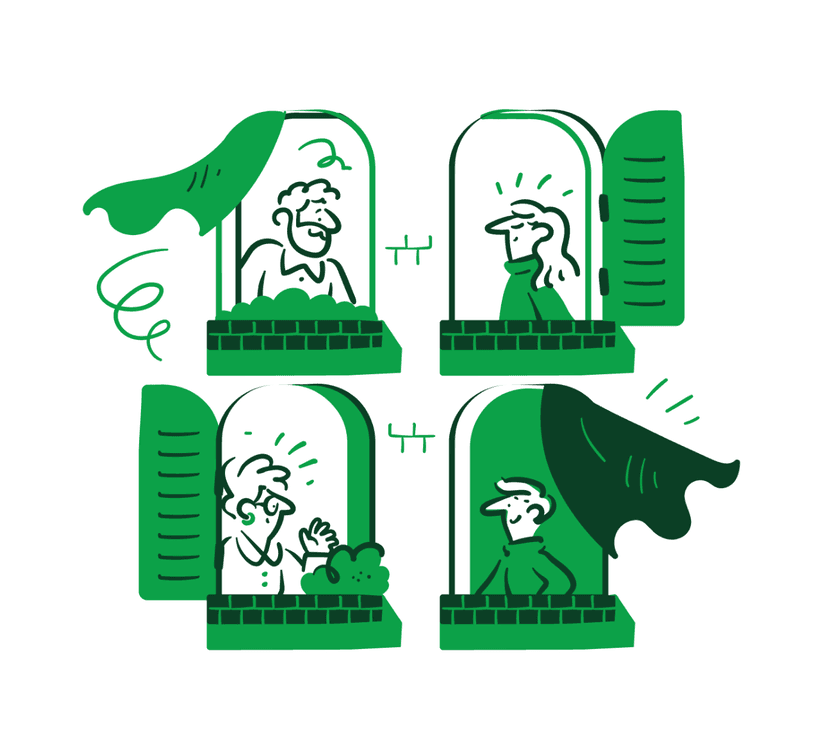VvE Fees Explained: What’s a “Normal” Contribution?

If you own an apartment in the Netherlands, chances are you’re paying a VvE contribution (VvE-bijdrage) – the monthly fee to your homeowners’ association (Vereniging van Eigenaars, VvE).
But what’s “normal”? Why do some people pay €100 per month, while others pay €350? And what happens if your fee suddenly increases?
This guide explains the basics, shows you the real averages in 2025, and breaks down what you can (and should) expect from your VvE contribution.
First things first: what is a VvE contribution (VvE-bijdrage)?
Your VvE contribution (VvE-bijdrage) is the monthly fee every apartment owner pays into the VvE. It covers:
- Daily costs → cleaning, lighting in hallways, gardening, minor repairs
- Insurance → usually the building insurance (opstalverzekering) and liability cover
- Professional management → if your VvE hires a VvE manager (beheerder)
- Savings for the future → the legally required reserve fund (reservefonds) for major maintenance such as roof, façade, or elevator replacement
Tip: You have the right to request a copy of the budget and annual accounts. Transparency is a legal obligation for every VvE.
What’s a “normal” fee in the Netherlands?
There’s no one-size-fits-all, but recent studies (2025) show:
- Average contribution: around €161 per month for a 70 m² apartment
- Typical range: €100 – €300 per month
- Trend: fees have risen by about 35% in the past five years, mainly due to higher energy prices and contractor costs
What influences your fee?
- Size of your apartment → you pay in proportion to your ownership share (breukdeel)
- Type of building → lifts, garages, shared gardens = higher costs
- Ambition level → is the VvE saving properly for future works or running “cheap” now?
- Management style → professional VvE manager (beheerder) vs. self-management (zelfbeheer)
Why might your VvE contribution feel “too high”?
- Energy prices → higher costs for common-area heating and electricity
- Insurance premiums → rebuild value (herbouwwaarde) increases drive up policy costs
- Catch-up savings → if the VvE neglected its reserve fund, fees may suddenly jump
- Major projects → saving for major maintenance (groot onderhoud), like roof or façade replacement
- Sustainability upgrades → insulation, solar panels (zonnepanelen), or EV charging stations (laadpalen) add to costs
What’s more expensive: low fees now or higher later?
Low monthly contributions may feel attractive… until reality hits. A VvE that saves too little ends up with deferred maintenance (achterstallig onderhoud).
When the roof suddenly leaks or the lift breaks, the VvE may not have the funds. The result? A hefty special levy (bijzondere bijdrage), sometimes thousands of euros per owner.
It’s usually smarter to pay a bit more monthly and avoid unpleasant surprises later.
FAQs about the VvE contribution (VvE-bijdrage)
Can the VvE just raise my fee?
Yes, but only if the general members’ meeting (ALV) votes for it. The budget must be approved by a majority of members.
Is the fee tax-deductible?
Generally not. Only certain maintenance on historic buildings (rijksmonumenten) is deductible.
How much should a VvE save?
By law, a VvE must:
- Save according to a multi-year maintenance plan (MJOP), or
- Save at least 0.5% of the building’s rebuild value (herbouwwaarde) per year
What if I can’t pay?
Not paying is risky: the VvE can charge interest, take legal action, or even suspend your voting rights. Talk to your board if you’re struggling – some VvE’s allow payment plans.
Key takeaways
- Normal fees: €100–€300 per month; average €161 in 2025
- Rising trend: +35% in the last 5 years
- Main drivers: apartment size, building type, reserve fund, sustainability, management style
- Paying more now = fewer surprises later
A healthy VvE is one that saves enough to maintain the building. In the end, your contribution protects not only your home but also your apartment’s long-term value.
More like this

Do You Pay Tax on the VvE Reserve Fund? Here’s How It Works
Every VvE in the Netherlands must have a reserve fund. What many owners don’t know: your share of this fund counts as part of your wealth in Box 3. Here’s how to calculate your share and report it correctly.

How Much Must Your VvE Save? Reserve Fund, MJOP, and the 0.5% Rule Explained
Every VvE in the Netherlands must have a reserve fund for major maintenance. Small VvE’s often wonder how much they really need to save. This guide explains the legal rules: save with an MJOP, or at least 0.5% of rebuild value each year.

What is a VvE?
The VvE (Vereniging van Eigenaars, or Owners' Association) is the governing body for an apartment complex in the Netherlands. If you own an apartment, you automatically become a member.